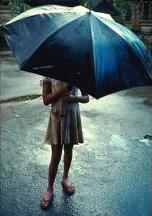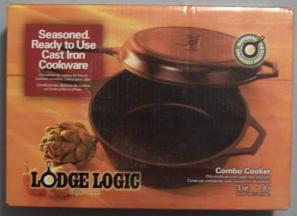

































 The concept of becoming 100% self-sufficient is a very basic emotion that appeals to most people's survival instinct. It is the primary ingredient of a variety of pleasant daydreams where we picture ourselves independent of society and surviving in a comfortable although somewhat modest fashion. However, the reality of self-sufficiency is completely different from the vision we conjure up for ourselves whenever this topic intrudes into our minds.
The concept of becoming 100% self-sufficient is a very basic emotion that appeals to most people's survival instinct. It is the primary ingredient of a variety of pleasant daydreams where we picture ourselves independent of society and surviving in a comfortable although somewhat modest fashion. However, the reality of self-sufficiency is completely different from the vision we conjure up for ourselves whenever this topic intrudes into our minds. When I was seven-years old my grandfather bought each of his three grandsons our own brand-new fishing poles and reels. Then we dug up some worms from our garden area, and my father, grandfather, and the three of us boys traveled in an old car to a nearby lake where there was a rowboat for rent. We rented the rowboat and my father rowed us towards one of the shaded banks of the lake. The three of us boys were then instructed on how to put a worm on a fishhook, and how to cast the weighted bait out into the lake without interfering with anyone else in the boat. We fished for about three-hours but we only succeeded in catching a few really, really small fish which the adults immediately removed from our hooks and tossed back into the lake. Then my father rowed us back to the boat dock.
When I was seven-years old my grandfather bought each of his three grandsons our own brand-new fishing poles and reels. Then we dug up some worms from our garden area, and my father, grandfather, and the three of us boys traveled in an old car to a nearby lake where there was a rowboat for rent. We rented the rowboat and my father rowed us towards one of the shaded banks of the lake. The three of us boys were then instructed on how to put a worm on a fishhook, and how to cast the weighted bait out into the lake without interfering with anyone else in the boat. We fished for about three-hours but we only succeeded in catching a few really, really small fish which the adults immediately removed from our hooks and tossed back into the lake. Then my father rowed us back to the boat dock. If there is even a very slight chance that you may need to evacuate your current residence, then a far superior option would be to simply capture rainwater each time it rains. Rainwater can be captured using heavy-duty tarps that can be purchased at almost any store that sells camping supplies, including most WalMarts. With just a little human ingenuity you could figure out the best way to capture rainwater each time it rains be forming your tarps into a "V" shaped pattern and directing the rainwater into a large water storage container, such as a large plastic tote container. You could then transfer that water to smaller storage containers.
If there is even a very slight chance that you may need to evacuate your current residence, then a far superior option would be to simply capture rainwater each time it rains. Rainwater can be captured using heavy-duty tarps that can be purchased at almost any store that sells camping supplies, including most WalMarts. With just a little human ingenuity you could figure out the best way to capture rainwater each time it rains be forming your tarps into a "V" shaped pattern and directing the rainwater into a large water storage container, such as a large plastic tote container. You could then transfer that water to smaller storage containers. If you don't already know how to prepare a tasty meal using ordinary ingredients such as flour, sugar, corn meal, and white rice, then you should consider purchasing both of the following cookbooks:
If you don't already know how to prepare a tasty meal using ordinary ingredients such as flour, sugar, corn meal, and white rice, then you should consider purchasing both of the following cookbooks: Regardless of how much food you have stored, you will eventually eat it all. At that time it would be really useful if you knew how to grow vegetables and how to save your seeds from one year to the next. I suggest you add both of the following books to your reference library:
Regardless of how much food you have stored, you will eventually eat it all. At that time it would be really useful if you knew how to grow vegetables and how to save your seeds from one year to the next. I suggest you add both of the following books to your reference library: There are not enough edible plants growing wild to keep a family alive for one-year. Don't bet your life that you are just going to walk into an area and find lots of wild edible plants just growing everywhere. It is not going to happen.
There are not enough edible plants growing wild to keep a family alive for one-year. Don't bet your life that you are just going to walk into an area and find lots of wild edible plants just growing everywhere. It is not going to happen. Just imagine - a rustic log cabin with a small barn and the family milk cow. What a truly romantic mental image. But the image has no realistic estimate of the amount of work involved. The purchase price of a milk cow is just the start. You also have to pay the periodic vet bills and the periodic breeding bill with a bull about once per year to keep her milk "fresh." And you will get no milk for about two months each year. And every day, at approximately 6 in the morning and 6 in the evening you must milk the cow. Whether you want to or not. Regardless of what you may be doing at those two times during the day you must stop and milk the cow. You can't sleep late. And you have to lead the cow out to the pasture in the morning and bring the cow into the barn in the evening. Even in the pouring rain. And you must provide some type of feed or hay for the cow during the winter months. And cows are just like people. Some are easy to get along with and some have very disagreeable dispositions. Guess which type of cow the dairy farmer is trying to get rid of? After you have the cow for one-day you would probably be willing to pay someone to take the cow off your hands. This isn't conjecture. I spent six-months on a small dairy farm when I was in my early twenties.
Just imagine - a rustic log cabin with a small barn and the family milk cow. What a truly romantic mental image. But the image has no realistic estimate of the amount of work involved. The purchase price of a milk cow is just the start. You also have to pay the periodic vet bills and the periodic breeding bill with a bull about once per year to keep her milk "fresh." And you will get no milk for about two months each year. And every day, at approximately 6 in the morning and 6 in the evening you must milk the cow. Whether you want to or not. Regardless of what you may be doing at those two times during the day you must stop and milk the cow. You can't sleep late. And you have to lead the cow out to the pasture in the morning and bring the cow into the barn in the evening. Even in the pouring rain. And you must provide some type of feed or hay for the cow during the winter months. And cows are just like people. Some are easy to get along with and some have very disagreeable dispositions. Guess which type of cow the dairy farmer is trying to get rid of? After you have the cow for one-day you would probably be willing to pay someone to take the cow off your hands. This isn't conjecture. I spent six-months on a small dairy farm when I was in my early twenties. If you already have extensive fishing experience then you know a very valuable skill that could help provide your family with a steady supply of fresh fish.
If you already have extensive fishing experience then you know a very valuable skill that could help provide your family with a steady supply of fresh fish. If you have been reading the information about survival on the internet for any reasonable period of time then you have already discovered that some people believe that hunting and trapping will be their primary method for obtaining fresh meat on a regular basis. And you have probably also discovered an equal number of people who believe this strategy is doomed for failure.
If you have been reading the information about survival on the internet for any reasonable period of time then you have already discovered that some people believe that hunting and trapping will be their primary method for obtaining fresh meat on a regular basis. And you have probably also discovered an equal number of people who believe this strategy is doomed for failure. At the current time in the United States an adult may legally make a limited amount of each of the following two beverages for consumption by his or her own family (and which are not offered for sale to anyone):
At the current time in the United States an adult may legally make a limited amount of each of the following two beverages for consumption by his or her own family (and which are not offered for sale to anyone): Your clothes will eventually need some type of repair. Therefore, you should have some hand sewing needles and some thread in a variety of colors. These items may be purchased at a very reasonable price at most WalMarts.
Your clothes will eventually need some type of repair. Therefore, you should have some hand sewing needles and some thread in a variety of colors. These items may be purchased at a very reasonable price at most WalMarts.
 |
 |
| Portable Set of Basic Hand Tools | Fastener Collection |
 At the current time there are lots of really good quality bicycles for sale at very, very reasonable prices at lots of stores, including most WalMarts. If you do not already own a good bicycle for each member of your family, then now is the time to seriously consider making this investment.
At the current time there are lots of really good quality bicycles for sale at very, very reasonable prices at lots of stores, including most WalMarts. If you do not already own a good bicycle for each member of your family, then now is the time to seriously consider making this investment. You will need to occasionally take your firearms apart and clean or repair them. If you are outdoors and you get caught in a sudden thunderstorm, then when you get home you will need to be able to take your firearm apart and wipe all the internal parts completely dry. You can find complete disassembly and reassembly instructions for almost every firearm you now own available for free download on the internet. You should locate these instructions, save a digital copy on your computer and on your flash drive, and you should print a hard-copy and put it with your gunsmithing tools. WalMart sells a reasonable set of basic Gunsmith Tools in their Sporting Goods Section for less than $10.00 (see picture on right).
You will need to occasionally take your firearms apart and clean or repair them. If you are outdoors and you get caught in a sudden thunderstorm, then when you get home you will need to be able to take your firearm apart and wipe all the internal parts completely dry. You can find complete disassembly and reassembly instructions for almost every firearm you now own available for free download on the internet. You should locate these instructions, save a digital copy on your computer and on your flash drive, and you should print a hard-copy and put it with your gunsmithing tools. WalMart sells a reasonable set of basic Gunsmith Tools in their Sporting Goods Section for less than $10.00 (see picture on right). If you have always wanted to learn some form of marital arts (karate, judo, boxing, etc.) then there is nothing wrong with pursuing this course of study. Not only will you benefit from the rigorous exercises but you will also learn how to protect yourself in a hand-to-hand self-defense environment.
If you have always wanted to learn some form of marital arts (karate, judo, boxing, etc.) then there is nothing wrong with pursuing this course of study. Not only will you benefit from the rigorous exercises but you will also learn how to protect yourself in a hand-to-hand self-defense environment. In the vast majority of situations, remaining where you currently live would probably be the best strategy for a family that does not have a specific location to retreat to in the event of an emergency. However, there are some types of events that would require you to quickly and permanently abandon your current home. If that should happen then you may need to establish a primitive retreat in a hostile wilderness environment. In order to have any chance of long-term success in the woods you will need some basic wilderness survival knowledge. I strongly recommend the following small book as an outstanding reference guide on this topic:
In the vast majority of situations, remaining where you currently live would probably be the best strategy for a family that does not have a specific location to retreat to in the event of an emergency. However, there are some types of events that would require you to quickly and permanently abandon your current home. If that should happen then you may need to establish a primitive retreat in a hostile wilderness environment. In order to have any chance of long-term success in the woods you will need some basic wilderness survival knowledge. I strongly recommend the following small book as an outstanding reference guide on this topic:
